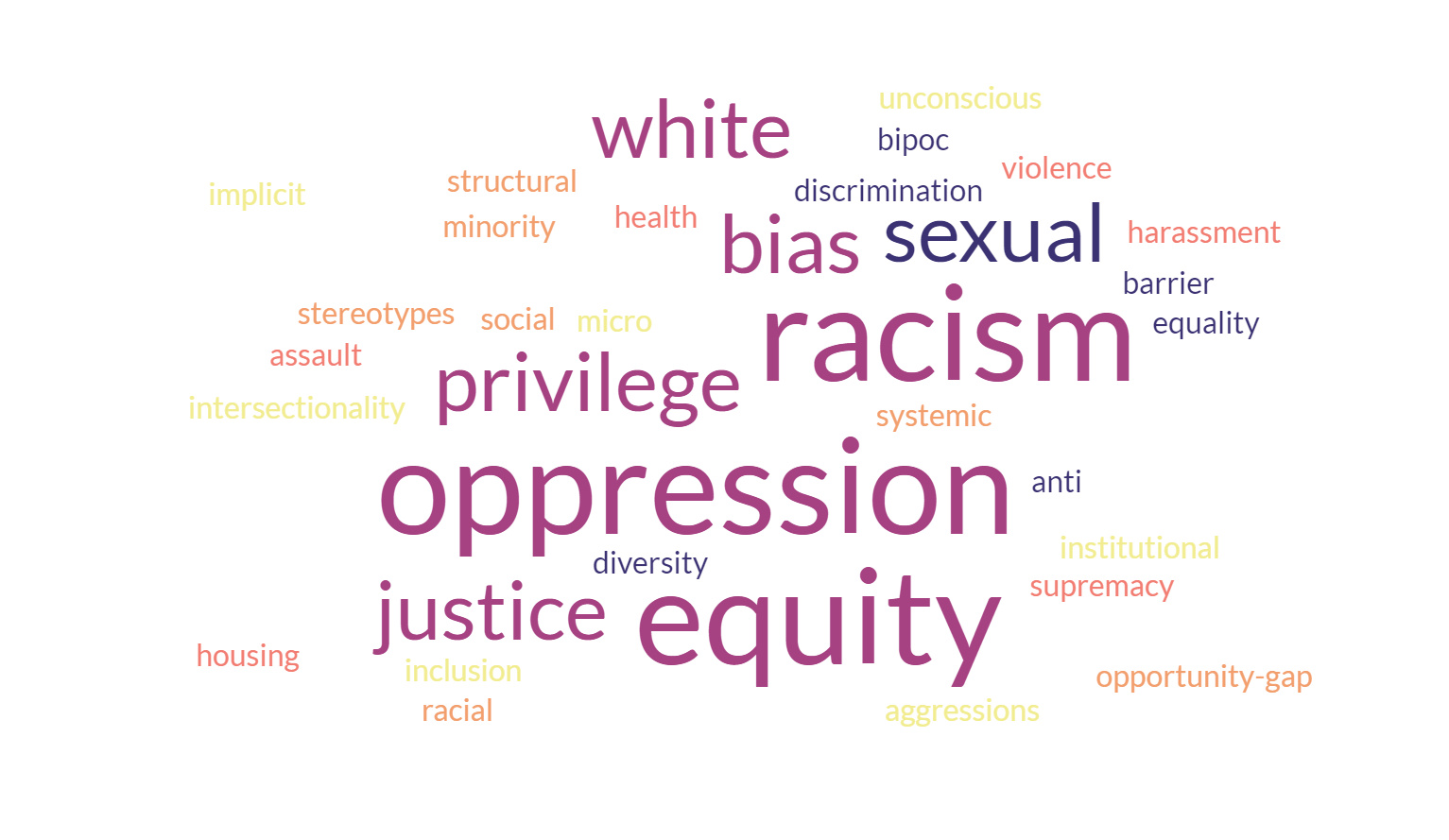
This list does not include all the terms and definitions related to systems that maintain unearned privileges and unjust oppressions. As we work towards a future without sexual violence, advocates, survivors, and communities must respond to a complex reality that center the needs of those most impacted by systemic oppression. This list is to support ongoing mutual learning.
Anti- Oppression refers to actions that seek to provide equitable approaches and practices to mitigate the effects of racism, ableism, sexism, classism, heterosexism, and classism.
Barrier refers to obstruction, difficulty, hindrance, obstacle, hurdle, stumbling block, or restriction that a person may not have direct control or authority to remove.
BIPOC according to The BIPOC Project, BIPOC is an acronym for Black, Indigenous, and people of color. It acknowledges that people of color face varying types of discrimination and prejudice. Additionally, it emphasizes that systemic racism continues to oppress, invalidate, and deeply affect the lives of Black and Indigenous people in ways other people of color may not necessarily experience. Lastly and significantly, Black and Indigenous individuals and communities still bear the impact of slavery and genocide.
Discrimination refers to treating someone differently than someone similarly situated without being fair and valuing the individual based on race, age, sex, gender, ability, socioeconomic class, immigration status, national origin, or religion.
Diversity refers to all the ways we are uniquely different. It includes the readily visible differences and the underlying differences that may be below the surface.
Equality refers to each individual or group of people being given the same resources and opportunities, regardless of their circumstances.
Equity refers to recognizing that each person has varying circumstances and needs. Therefore different groups of people need resources and opportunities allocated to them accordingly to thrive.
Implicit Bias/Unconscious Bias refers to someone who consciously rejects stereotypes and supports anti-discrimination efforts but also unconsciously holds negative associations in their mind. According to National Education Association is possible to interrupt implicit bias by adding steps to decision-making processes that thoughtfully consider and address racial impacts.
Inclusion refers to a state of being valued, respected and supported. It’s about focusing on the needs of every individual and ensuring the right conditions are in place for each person to achieve their full potential.
Institutional Racism refers to formal institutions or governing bodies that have power socially, culturally, and politically in society. Policies, procedures, legislation, and practices of institutions disproportionately negatively affect racial minorities' access to goods, services, and opportunities. Institutional racism leads to inequality.
Intersectionality refers to the complex, cumulative way in which the effects of multiple forms of discrimination (such as racism, sexism, and classism) combine, overlap, or intersects, especially in the experiences of marginalized individuals or groups.
Micro- Aggressions refers to a subtle, often unintentional, form of prejudice. Rather than an overt declaration of racism or sexism, a microaggression often takes the shape of an offhand comment, an inadvertently painful joke, or a pointed insult. Learn more about how to talk them out and when to walk away.
Minority refers to a racial, religious, political group or community that differs from the larger controlling group; for example, all Federal EEO classifications except White/Caucasian and non-Hispanic.
Oppression refers to oppressed groups that may consist of people who share a historically marginalized identity, like people of color or individuals of a particular religion or gender. For example systems of oppression are sexism, heterosexism, ableism, classism, ageism, and anti-semitism.
Opportunity-Gap refers to the unequal or inequitable distribution of resources and opportunities. For example, the uncontrollable circumstances in which people are born—such as their race, ethnicity, language they speak, family situation, zip code, and socioeconomic status determine their opportunities in the educational system, career, and life more broadly.
Privilege refers to forms of access to resources that result from legal or social norms having to do with membership in a group.
Racial Justice refers to the systematic fair treatment of people of all races. In addition is proactive reinforcement of policies, practices, attitudes, and actions that produce equitable power, access, opportunities, treatment, impacts, and outcomes for all.
Racism refers to the practice of racial discrimination, segregation, prejudice, bias, bigotry, and stereotype. Historically rooted system of power hierarchies based on race— infused in our institutions, policies, and culture.
Social Justice refers to equal rights and equitable opportunities for all.
Stereotypes refer to characteristics ascribed to a person or groups of people based on generalization and oversimplification that may result in stigmatization and discrimination. Even so-called positive stereotypes (e.g., Asians as "model minorities") can be harmful due to their limiting nature.
Structural Racism refers to the ongoing, historical, and long-term reproduction of the racialized structure of our society through a combination of all forms of racism.
Systematic Oppression refers to discrimination that is omnipresent in our societal structures, like our laws, education, and customs.
White Privilege refers to the unquestioned and unearned set of advantages, entitlements, benefits, and choices bestowed on people solely because they are white.
White Supremacy refers to a system and culture of racism centered upon the belief that white people are superior to people of other racial backgrounds and that whites should politically, economically, and socially dominate non-whites.
Additional Resources
How to talk to your children about protests and racism
Talk to your family members and to your family friends
THE TIME'S UP GUIDE TO Equity and Inclusion During COVID-19 Recovery
